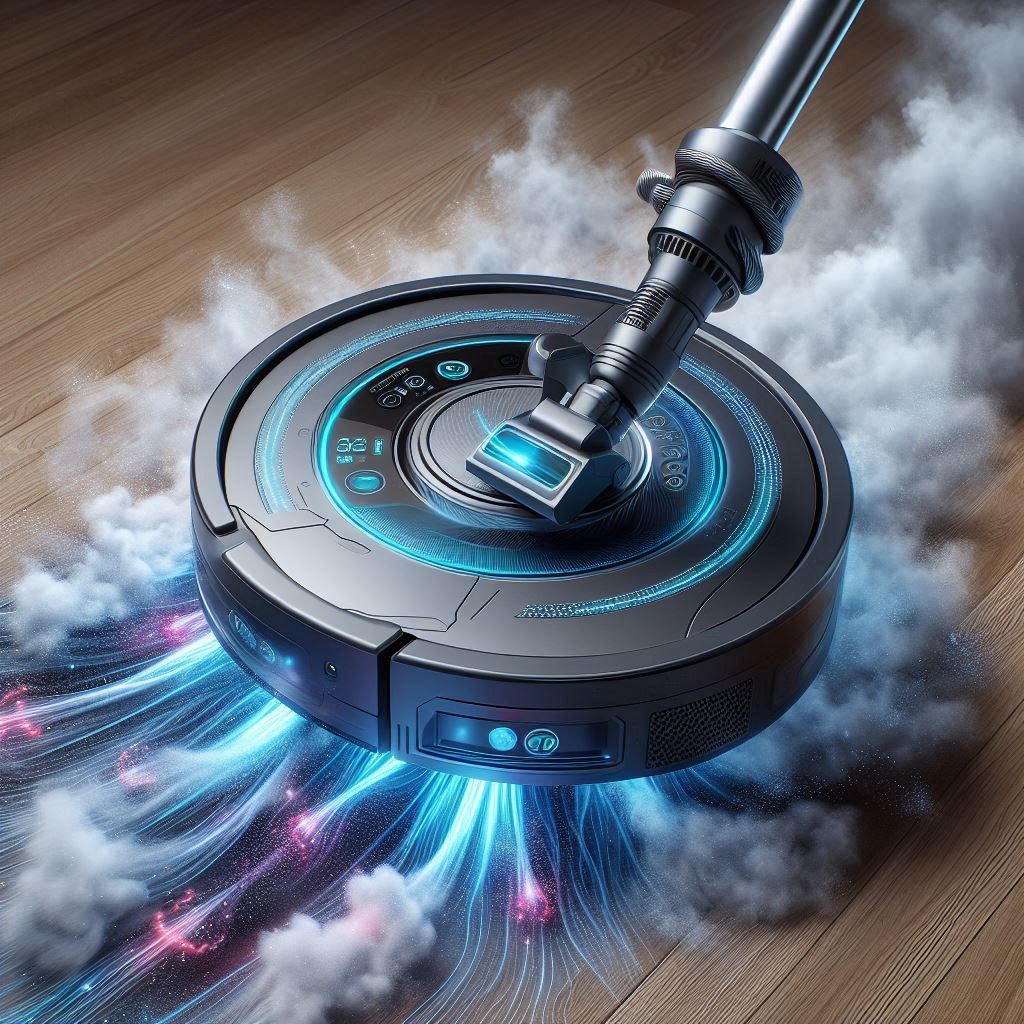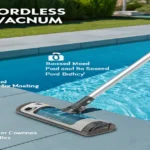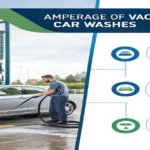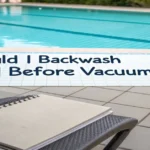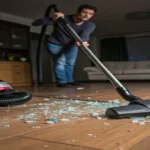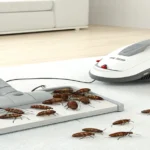What Is A Good Suction Power For Robot Vacuum Cleaner
Picking out a robot vacuum can be an overwhelming process. With so many models on the market boasting different features and capabilities, it’s tough to know exactly what you need. One of the most important factors to consider is suction power – after all, suction is what enables the vacuum actually to pick up dirt and debris.
But how much suction is essential? The answer depends on your unique home cleaning needs.
In this comprehensive guide, we’ll break down how suction power is measured, what levels are optimal for different floor types and mess levels, and provide concrete recommendations on which robot vacuums truly have the best suction capabilities .
How Suction Power is Measured and What It Means
Suction power in robot vacuums, also called airflow, is measured in pascals (Pa). Most robot vacuums on the market today range from around 1,500 Pa on the low end to 4,000 Pa on the high end.
For comparison, a typical full-sized vacuum cleaner has anywhere from 5,000 to 25,000 Pa of suction. Higher numbers indicate more powerful suction ability.
More suction enables the vacuum to lift and suck up more debris, dirt, and dust in fewer passes. Stronger suction is especially important for cleaning carpets and rugs compared to hard flooring.
So in simple terms, the higher the Pascal rating, the deeper and more thorough the cleaning potential. But you don’t necessarily need the absolute highest suction for every home.
Suction Recommendations by Flooring Type
- For hard floors like hardwood, laminate, tile, and vinyl, most robot vacuums with 1,200-1,500 Pa of suction will sufficiently pick up surface-level dust, dirt, and debris. Models like the iRobot Roomba j7 or Eufy RoboVac 15C are great for regular maintenance cleaning of hard floors.
- For medium to high-pile carpets, look for robot vacuums with 2,000-3,000 Pa of suction. The stronger power enables the robot to deep clean carpets and lift dirt trapped deep in the fibers. Robots like the Roborock S7 MaxV and Shark IQ Robot RV1000 are excellent choices for homes with lots of carpeting.
- For households with shedding pets like dogs and cats, target robot vacuums with extra high suction in the 2,500-4,000 Pa range. The ultra-strong airflow will lift stubborn pet hair from carpets and upholstery much more effectively. Top choices include bObsweep PetHair Vision and Dreametech D9.
- For large homes over 2,000 sq ft, it’s wise to opt for robot vacuums with 3,000+ Pa like the Eufy RoboVac X8 and Neato D10. The boosted suction will allow the robot to thoroughly clean big spaces in a single cleaning cycle without losing power.
Evaluating Other Key Features Besides Suction
While suction power is a top consideration, it’s not the only factor that makes a great robot vacuum. Be sure to also evaluate:
- Battery life – Look for at least 60 to 90 minutes of runtime per charge. Extended battery life allows the robot to clean larger spaces without stopping to recharge as frequently.
- Navigation technology – Advanced navigation like vSLAM camera systems, lidar sensors, and smart mapping allows for methodical and efficient cleaning patterns.
- Self-emptying – Automatic dirt disposal into a base bag or canister means you don’t have to manually empty the robot as often.
- App control & scheduling – Monitor progress and customize cleaning schedules from your smartphone.
- Voice assistant integration – Hands-free voice control using Alexa, Google Assistant or Siri.
- Maintenance – Easy to empty dustbin, clean brushes, wheels, and filters prolong the robot’s lifespan.
Our Top Robot Vacuum Picks for Powerful Suction
- Dreametech D9 – With 4,000 Pa max suction, this is one of the most powerful robot vacuums that excels at lifting pet hair. Also has great navigation and cleaning customization via the app.
- Roborock S7 MaxV – With 5,100 Pa max suction and included auto-empty dock, this is a top-tier robot vacuum that truly deep cleans carpets. Also mops hard floors.
- Shark IQ Robot RV1000 – Budget-friendly option with 1,000 Pa suction, good for maintenance cleaning. Has home mapping and app controls.
- iRobot Roomba j7+ – With 2,200 Pa suction, this robot vacuum reliably handles pet hair on carpets and hard floors. Also empties itself and avoids obstacles via camera.
- bObsweep PetHair Vision – Specifically designed for pet owners, this robot vacuum boasts 2,700 Pa maximum suction to lift cat and dog hair. Also has good navigation.
FAQs
Q: How is suction power measured for robot vacuums?
A: Suction power is measured in pascals (Pa). Most robot vacuums range from 1,500 to 4,000 Pa of suction. Higher Pascal values indicate stronger suction and cleaning ability.
Q: What suction power is best for pet hair?
A: For homes with shedding pets, look for robot vacuums with maximum suction power between 2,500-4,000 Pa. Models like the bObsweep PetHair Vision excel at lifting stubborn pet hair from floors.
Q: Is more suction better for cleaning carpets?
A: Yes, higher suction power is better for deep cleaning carpets. Look for robot vacuums with 2,000-3,000 Pa of suction to lift dirt from carpet fibers. Robots like the Roborock S7 MaxV clean carpets impressively.
Q: Do I need high suction for hard floors?
A: Not necessarily. For hard floors like hardwood or tile, most robots with 1,200-1,500 Pa of suction have enough power for regular surface cleaning.
Q: How long should a robot vacuum’s battery life be?
A: Look for robot vacuums with at least 60-90 minutes of runtime per charge. Longer battery life allows the robot to clean larger spaces without having to stop and recharge frequently.
Q: What smart features should I look for?
A: Advanced navigation, self-emptying, app controls, scheduling, voice commands, and automatic recharging are useful smart features in today’s robot vacuums.
Q: How often do robot vacuums need maintenance?
A: It’s recommended to empty the dustbin and clean the brushes and filters after each use. Replace key components like filters and brushes every 6-12 months.
Q: Can robot vacuums mop floors too?
A: Some advanced models like the Roborock S7 MaxV have integrated mopping systems to vacuum and mop hard floors in one cleaning.
The Takeaway on Suction Power
At the end of the day, there is no universally perfect suction power, but target 2,000-3,000 Pa for medium pile carpets and homes with pets. For largely hard floors and lighter messes, 1,200-1,500 Pa is sufficient.
Remember to factor in battery life, navigation, app controls, and other features to find your ideal robot vacuum match. With this knowledge, you can shop smartly and make an informed purchase decision.
Hey, I’m Abdul Manan, a vacuum enthusiast with a knack for simplifying cleaning. I love sharing tips, tricks, and insights to help you get the most out of your vacuum. Let’s tackle cleaning the smart way!
